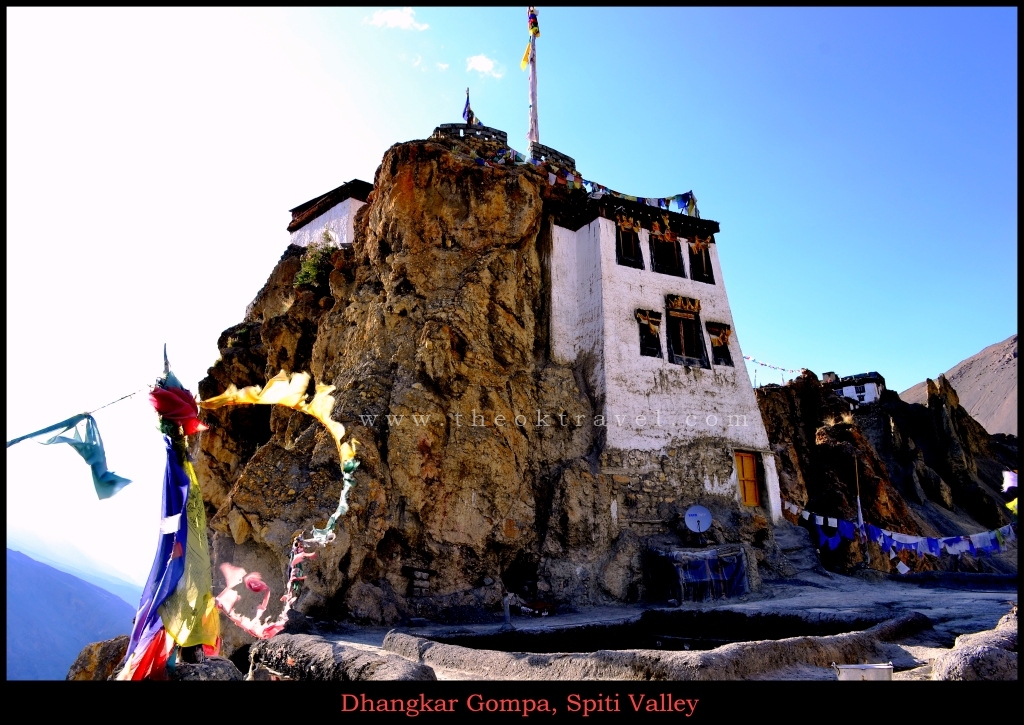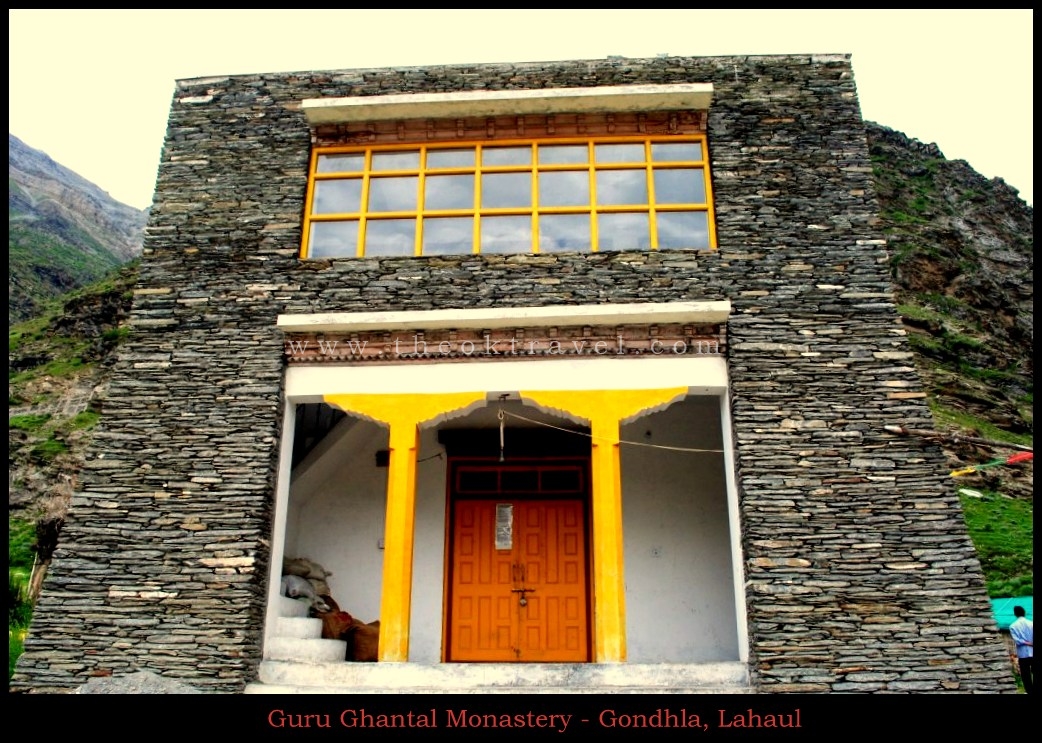Monks, monasteries, and Budhhism have a close relationship with Himachal Pradesh. Hundreds of visitors from distant corners of the world visit Himachal every year to pay a visit to these hubs of Buddhist Culture and Religion.
However, not many people are aware of the fact that there are more than hundreds of monasteries in the state, and these monasteries are not limited to the Dharamshala or Spiti Region. Here is a first list of some of the prominent monasteries of the state.
Dhankar Gompa: It is one of the most famous Buddhist Monastery in Himachal Pradesh. It is located in the enchanting valley of Spiti between the magnificent towns of Kaza and Tabo. The monastery is believed to be one of the most ancient monasteries in Himachal Pradesh and built about a thousand years ago. The monastery has numerous attractions to its credit including a statute of Dhayan Buddha that is composed of 4 figures standing back to back of each other. It also includes a rich collection of numerous degenerating thangkas.

This splendid monastery is situated at an elevation of around 3,894 m in the Spiti Valley. It is one of the most captivating and inquisitive milestone of Spiti valley. The monastery complex is built on a 300 m high spur over the convergence of the Spiti and Pin Rivers. This builds the settings of one of the most beautiful monastery in India. The whole compound was built as a fort monastery and accommodates around 90 monks in 1875 as per records. Therefore the monastery derives the name Dhangkar (fort on cliff). Gompa also houses a small museum in its complex along with a magnificent statute of Vairochana (Dhayan Buddha). A small village in the name of Shichilling lies nearby the prominent monastery that consists the new Dhankar Monastery.
In the year 2006, World Monuments Fund adjudged Dhankar Gompa as one of the most endangered sites in the whole world. Presently a non-profit organization is working on the project of its maintenance.
Although there is no facility of public transport to Dhankar but private vehicles can be hired to reach the place. Adventure lovers could also try hiking option and make their journey memorable. The best time to visit the monastery is from July to early November.
Dzongkhul Monastery: It is one of the most famous shrines for the Buddhists around the world and is located in the Stod Valley in the Zanskar Region on the border of Himachal Pradesh and Jammu & Kashmir. The monastery is very famous among the visitors across the world for its unusual construction on rock wall facing the Ating Gorge. The monastery has many Buddhist temples and caves around it. The monastery is associated with many Yogins.
Also known as Zongkhul Gompa, the grand monastery belongs to the Drukpa school of Tibetan Buddhism. The monastery was founded by great Indian Buddhist Yogi Naropa. As per the legend Naropa has mediated in one of the two caves around the Zongkhul Gompa. Therefore, the monastery is named after him.
Thousands of tourists across the world visit the monastery to witness the images and thangkas of the famous Drukpa lamas. There are very enthralling frescos created by the painters on the walls of the caves. Impressions of Naropa’s ceremonial dagger also attract numerous pilgrims towards the monastery. The ivory image of Samvara, a crystal stupa and ancient texts provide an unmatched status to the monastery among all the other monasteries in India.
The place experiences heavy snowfall in winters especially in the months ranging from September to February. Therefore pilgrims should plan their trip in accordance with the weather conditions in the place. It is recommended that the tourists should visit Zanskar during the months from July to early November.
The famous Zongkhul Huchot Festival is organized on the 16th and 17th days of the fourth Tibetan month. It attracts lots of tourists but the festival doesn’t include the famous masked dances.
Tupchilling Monastery: Gondla, Kundlah or Guru Ghantal Gompa is about 18km in Lahaul in Himachal Pradesh. It is present in the village named Tupchilling. The famous monastery is situated on the hill above a village named Tupchilling at the junction of Chandra and Bhaga rivers. It owes allegiance to H.H the 12th Gyalwang Druka. The monastery is associated with Drukpa Kargyu sect of Tibetan Buddhism and Guru Riponche or Padmasambhava. Guru Ghantal Monastery could be traced back to 2nd century during the time of Nagarjuna. Some also claim that it bears an association with Kushan Empire as well. The monastery possesses a black stone image of Goddess Kali and a wooden statue of Lord Buddha (installed by the monk Rinchen Zangpo).

The eight story fort made out of timer and stone is also present around the monastery complex. At present the famous monastery is existing in two storied structure. Though the monastery had more extended and larger complex made in total Indian style but now most part has been crumbled. The complex includes an Assembly Hall on the ground floor. The monastery also has rare wooden idols of Guru Padma Sambhava Brijeshwari Devi and other lamas. In 1959 the age old monastery underwent some repair and small pagoda roof of Kangra slates was added surrounded by mud roofs. It helped in covering the exposed monk’s rooms and kitchen based on second floor of the complex.
